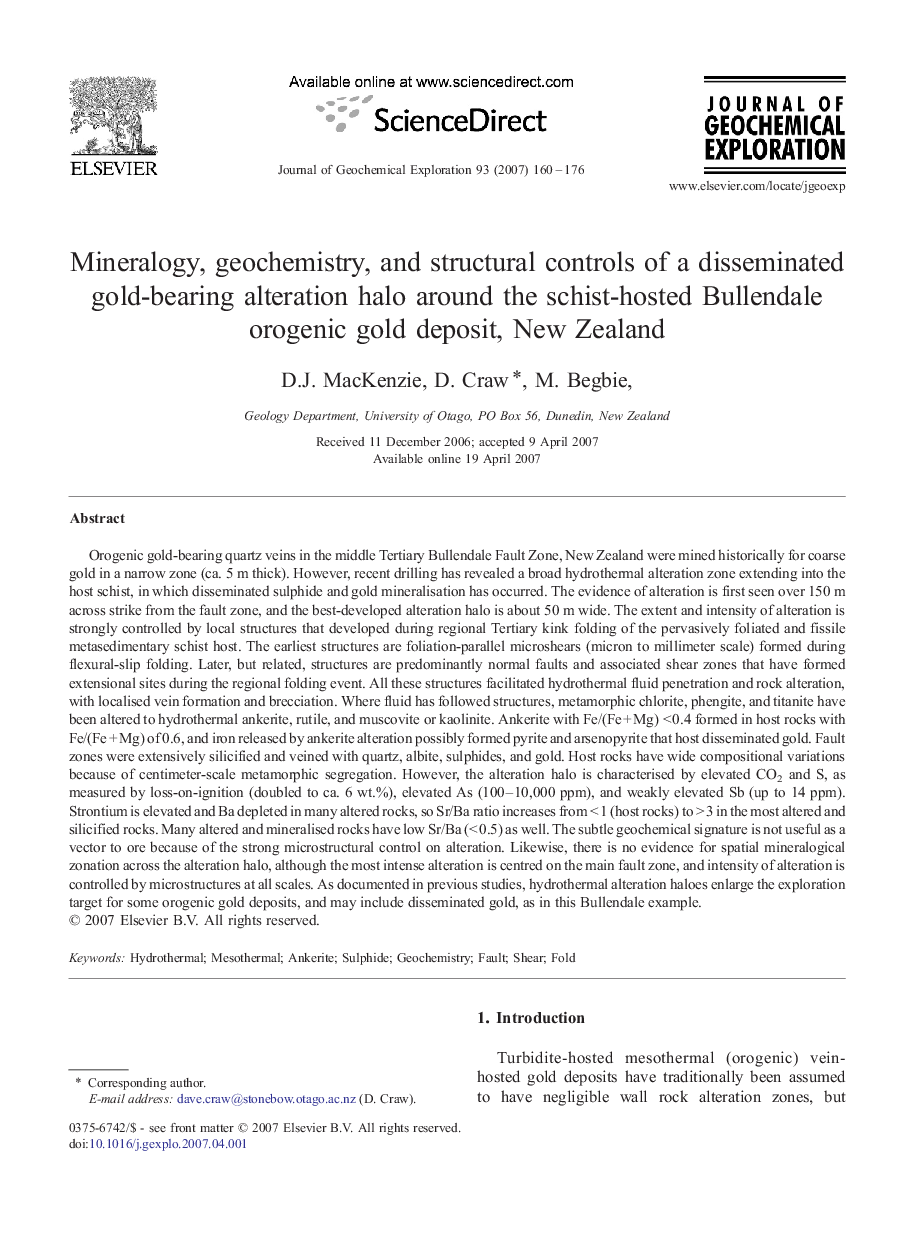| Article ID | Journal | Published Year | Pages | File Type |
|---|---|---|---|---|
| 4458392 | Journal of Geochemical Exploration | 2007 | 17 Pages |
Orogenic gold-bearing quartz veins in the middle Tertiary Bullendale Fault Zone, New Zealand were mined historically for coarse gold in a narrow zone (ca. 5 m thick). However, recent drilling has revealed a broad hydrothermal alteration zone extending into the host schist, in which disseminated sulphide and gold mineralisation has occurred. The evidence of alteration is first seen over 150 m across strike from the fault zone, and the best-developed alteration halo is about 50 m wide. The extent and intensity of alteration is strongly controlled by local structures that developed during regional Tertiary kink folding of the pervasively foliated and fissile metasedimentary schist host. The earliest structures are foliation-parallel microshears (micron to millimeter scale) formed during flexural-slip folding. Later, but related, structures are predominantly normal faults and associated shear zones that have formed extensional sites during the regional folding event. All these structures facilitated hydrothermal fluid penetration and rock alteration, with localised vein formation and brecciation. Where fluid has followed structures, metamorphic chlorite, phengite, and titanite have been altered to hydrothermal ankerite, rutile, and muscovite or kaolinite. Ankerite with Fe/(Fe + Mg) < 0.4 formed in host rocks with Fe/(Fe + Mg) of 0.6, and iron released by ankerite alteration possibly formed pyrite and arsenopyrite that host disseminated gold. Fault zones were extensively silicified and veined with quartz, albite, sulphides, and gold. Host rocks have wide compositional variations because of centimeter-scale metamorphic segregation. However, the alteration halo is characterised by elevated CO2 and S, as measured by loss-on-ignition (doubled to ca. 6 wt.%), elevated As (100–10,000 ppm), and weakly elevated Sb (up to 14 ppm). Strontium is elevated and Ba depleted in many altered rocks, so Sr/Ba ratio increases from < 1 (host rocks) to > 3 in the most altered and silicified rocks. Many altered and mineralised rocks have low Sr/Ba (< 0.5) as well. The subtle geochemical signature is not useful as a vector to ore because of the strong microstructural control on alteration. Likewise, there is no evidence for spatial mineralogical zonation across the alteration halo, although the most intense alteration is centred on the main fault zone, and intensity of alteration is controlled by microstructures at all scales. As documented in previous studies, hydrothermal alteration haloes enlarge the exploration target for some orogenic gold deposits, and may include disseminated gold, as in this Bullendale example.
